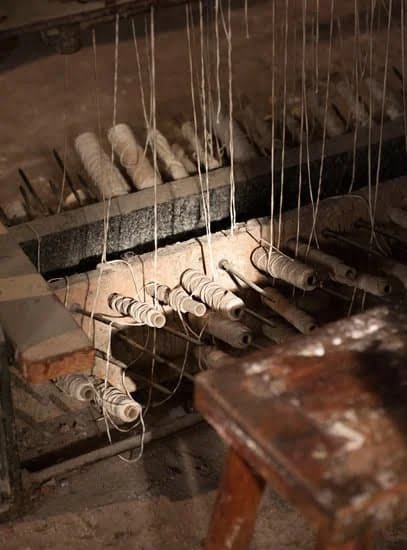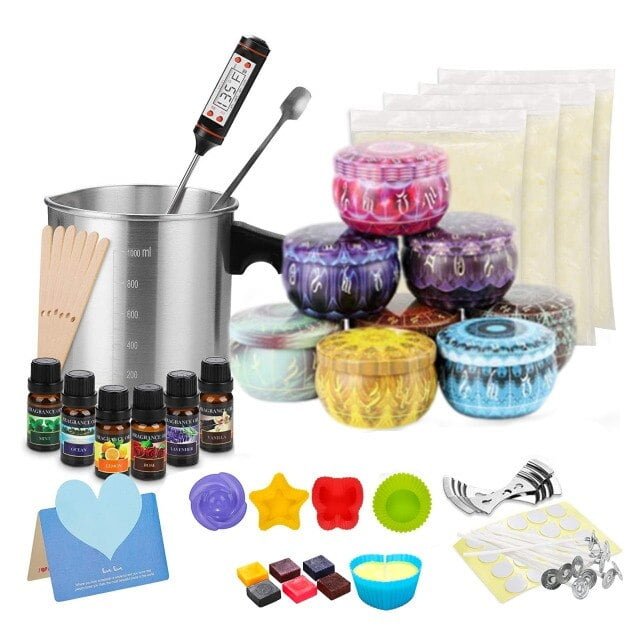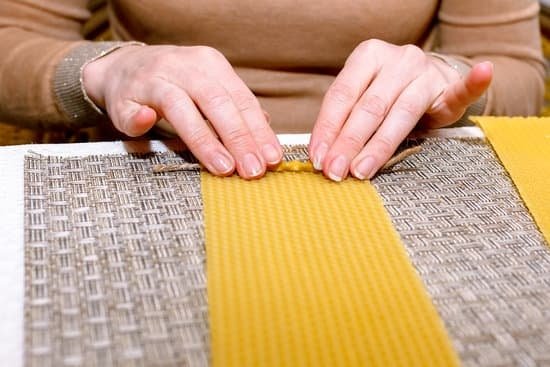Candle making is a beloved craft that allows individuals to create beautiful and fragrant works of art. While many aspects contribute to the overall success of a candle, one crucial element is often overlooked – the centering of wood wicks. In this article, we will explore why centering wood wicks is essential in candle making and how to achieve it effectively.
Wood wicks are becoming increasingly popular among candle makers due to their unique aesthetic appeal and soothing crackling sound when lit. However, unlike traditional cotton wicks, wood wicks require special attention when it comes to placement within the candle container.
Understanding the basics of wood wicks is vital in achieving proper centering. These wicks consist of wooden strands held together with a special adhesive, which requires particular care during the preparation process. Additionally, selecting the right size and shape for your candle container plays a significant role in ensuring the wood wick remains centered throughout its burn time.
With a variety of techniques available, properly trimming and conditioning your wood wick will enhance its performance and maintain correct positioning. Furthermore, measurements are key in achieving precise placement within your candle. Calculating the perfect spot for your wood wick ensures an optimal burn while preventing any stability issues that may arise.
In the following sections, we will delve into more detailed guidelines on preparing your candle container, prepping your wood wick, mastering different centering techniques, and troubleshooting common issues that may occur along the way. By learning these essential skills, you can confidently create candles with perfectly centered wood wicks that showcase both their elegance and functionality.
Understanding the Basics of Wood Wicks
Wood wicks are a popular choice for candle makers due to their unique characteristics and aesthetic appeal. Unlike traditional cotton wicks, wood wicks add a charming crackling sound as they burn, creating a soothing ambiance reminiscent of sitting by a cozy fireplace. Understanding the basics of wood wicks is crucial in candle making to ensure a successful and satisfying burning experience.
One key difference between wood wicks and cotton wicks is their composition. Wood wicks are typically made from natural materials such as organic wood fibers or wooden strips. This provides them with the ability to create the distinct crackling sound that many people love. Additionally, wood wicks usually have a wider surface area compared to cotton wicks, allowing for a more even and consistent burn.
When using wood wicks, it is important to consider their size and shape in relation to your candle container. The length of the wood wick should be suitable for the height of your container, ensuring that it reaches near the bottom but does not touch it. Similarly, the width of the wood wick should be proportionate to the diameter of your container, allowing for efficient burning without excessive sooting or tunneling.
To prepare your wood wick for optimal performance, proper trimming and conditioning are essential. Before placing it in your candle, trim the wooden strip on top of the wood wick to an appropriate length.
This will help ensure that you have enough exposed strip for easy lighting while preventing an excessive flame height. Conditioning involves pre-burning your wood wick before including it in your candle-making process, as this helps eliminate any impurities and aids in achieving an even burn throughout its lifespan.
Understanding these basics about wood wicks will set you up for success when centering them in your candles. By selecting the right size and shape for your container and properly trimming and conditioning your wood wick, you can ensure a beautiful aesthetic and an enjoyable burning experience with crackling sounds that enhance the atmosphere.
Preparing Your Candle Container
One of the key factors in centering wood wicks in candle making is choosing the right size and shape of your candle container. This step is crucial because it determines how well your wood wick will be centered and how efficiently your candle will burn.
When selecting a container, consider its diameter and height. The diameter should be wide enough to allow for proper air circulation around the flame, which helps with an even burn. If the container is too narrow, it may cause the flame to become too tall or unevenly burn the wax.
Similarly, the height of the container should be appropriate for your chosen wood wick length. Ideally, there should be enough space between the top of the wick and the container’s rim to prevent excessive heat buildup, which could potentially damage the container or cause a fire hazard.
In addition to size considerations, you may also want to think about the shape of your candle container. Different shapes can provide varying aesthetic effects while still allowing for proper wood wick centering. For example, round containers are popular choices for their classic look, while square or rectangular containers offer a more contemporary feel. Ultimately, it’s important to select a shape that enhances your overall candle design while still accommodating a centered wood wick placement.
| Container Shape | Ideal Wood Wick Diameter | Height-to-Wick Length Ratio |
|---|---|---|
| Round | 1/4 inch | 1:2 (wick length should be half the height of container) |
| Square | 1/2 inch | 1:3 (wick length should be one-third the height of container) |
| Rectangular | 1/4 inch | 1:4 (wick length should be one-fourth the height of container) |
Remember, these are general guidelines and may vary depending on the specific wood wick brand you are using and personal preferences. It’s always a good idea to experiment and test different sizes and shapes to find what works best for your candle making process.
Prepping Your Wood Wick
Trimming Your Wood Wick
Before you can properly center your wood wick in a candle, it is essential to trim it to the correct length. The length of your wood wick will depend on the size of your candle container and the desired burn time. A general rule of thumb is to trim the wood wick to be about 1/8 inch above the surface of the wax. This allows for a clean and even burn.
To trim your wood wick, use a pair of sharp scissors or a wick trimmer designed specifically for wooden wicks. Hold the wood wick taut with one hand while cutting with the other. Be sure to cut straight across, ensuring that there are no jagged edges or uneven ends.
Conditioning Your Wood Wick
In order to achieve optimal burning performance, it is important to condition your wood wick before placing it in the candle. Conditioning helps remove any excess moisture from the wood, allowing for a more consistent and controlled burn.
To condition your wood wick, you can use a technique called priming. Priming involves coating the wood with melted wax before inserting it into the candle. This helps create an initial flame and ensures that the wood will burn evenly throughout its lifespan.
To prime your wood wick, simply dip it into melted wax and let it sit for a few seconds until fully saturated. Then remove it from the wax and allow any excess to drip off. Place the primed wood wick on a heat-resistant surface or wax paper to dry completely before using.
By properly trimming and conditioning your wood wicks, you are setting yourself up for success in centering them within your candle. These simple steps ensure that your wood wicks are ready for placement and will burn efficiently throughout their lifespan.
The Importance of Measuring
In candle making, achieving the perfect placement for your wood wick is crucial for ensuring a beautiful and well-functioning candle. This step may seem simple, but it requires precision and careful measurement to ensure that the wood wick burns evenly and produces a steady flame throughout the life of the candle.
One of the key factors in calculating the perfect placement for your wood wick is determining the appropriate distance between the wick and the sides of the container. This distance will depend on factors such as the size and shape of your container, as well as the type of wax you are using.
A general rule of thumb is to leave about 1/2 inch to 3/4 inch of space between the wood wick and the sides of the container.
Another important consideration when measuring for wood wicks is determining their placement in relation to any additives or decorations you plan to include in your candle. If you are planning to add dried flowers, herbs, or other decorative elements to your candle, make sure to measure and calculate how these elements will affect the position of your wood wick. You don’t want these elements to interfere with the burning process or cause any safety issues.
To help you achieve accurate measurements, it’s a good idea to use a ruler or a measuring tape specifically designed for candle making. These tools often have markings that indicate where you should trim your wood wicks for optimal placement. By following these guidelines, you can ensure that your wood wicks are centered correctly in your candle containers.
| Measurement Tool | Price Range |
|---|---|
| Ruler | $1-$5 |
| Candle Making Measuring Tape | $5-$10 |
By taking the time to measure and calculate the perfect placement for your wood wick, you can enhance the overall quality and appearance of your candles. This attention to detail will not only impress your customers but also ensure that they have a delightful and safe burning experience. So, make sure to incorporate this important step into your candle making process and enjoy the satisfaction of creating beautifully centered wood wicks.
Centering Techniques
Wood wicks have unique properties that make them a popular choice for candle making. However, without proper centering techniques, your wood wick may shift or become unevenly burned. In this section, we will explore some tips and tricks to ensure that your wood wick stays in place throughout the candle making process.
One effective technique for centering a wood wick is using a wick holder or centering device. These tools are specifically designed to keep the wood wick in place while you pour the melted wax into the container. They come in various shapes and sizes to accommodate different candle containers. Simply place the wick holder in the center of the container and insert the wood wick through it before pouring the wax.
Another technique is to use a double-sided tape to secure the wood wick at the bottom of the container. This method works well for containers with flat bottoms. Cut a small piece of double-sided tape and stick one side onto the metal tab of the wood wick, then press it firmly onto the bottom of the container. The adhesive will keep the wood wick centered as you pour hot wax into the container.
If you prefer a more natural approach, you can also try using natural materials like beeswax or soy wax as an adhesive. Simply melt a small amount of beeswax or soy wax and dab it onto the metal tab of your wood wick. Press it firmly onto the bottom of your container until it sets and holds in place. Beeswax and soy wax provide a secure grip while still maintaining an eco-friendly aspect to your candle making process.
By utilizing these centering techniques, you can ensure that your wood wicks stay in place during candle making, resulting in beautifully centered candles with even burns. Experiment with different methods to find which one works best for your specific candle making project and enjoy creating stunning candles with perfectly centered wood wicks.
Securing Your Wood Wick
While proper placement and centering of a wood wick in candle making are crucial, the next step is to secure it in place. An adhesive ensures that the wood wick remains centered throughout the entire candle making process. Fortunately, there are various adhesive options available that can help you achieve a secure centering.
Hot glue
One of the most commonly used adhesives for securing wood wicks is hot glue. It provides a strong bond and dries quickly, ensuring that your wood wick stays in place. To use hot glue, simply apply a small amount to the metal base of the wood wick and press it firmly onto the bottom of your container. Be careful not to use too much glue as it can create an uneven surface.
Double-sided tape
Another option for securing your wood wick is double-sided tape. This adhesive is easy to use and provides a secure bond between the wood wick and container. To apply double-sided tape, cut a small piece and stick one side onto the metal base of your wood wick. Then peel off the backing and press the taped side firmly onto the bottom of your container.
Candle adhesive
If you prefer a more specialized adhesive specifically designed for candle making, there are candle adhesives available on the market. These adhesives are formulated to withstand heat and provide a strong bond between the wood wick and container. Follow the manufacturer’s instructions for application as different products may have specific guidelines.
It’s important to note that regardless of which adhesive option you choose, make sure it is non-toxic and safe for use in candles. Avoid using any adhesives that may emit harmful fumes when heated.
By securing your wood wick with an adhesive, you can ensure that it remains centered throughout the entire candle making process, from pouring the wax to burning the candle. This will not only enhance the overall appearance of your candles but also provide a safer and more enjoyable burning experience for customers.
Troubleshooting Common Issues
Wood wicks are a popular choice for candle makers due to their unique appearance, crackling sound, and eco-friendly nature. However, just like any other element in the candle making process, wood wicks can present challenges if not properly centered. In this section, we will explore common issues related to wood wick shifting or detaching and provide tips on how to troubleshoot them effectively.
One common issue that candle makers encounter is the wood wick shifting during the pouring process. This can happen if the wick is not secured properly in place before pouring the wax. To prevent this issue, it is crucial to follow proper centering techniques as discussed in the previous section. Additionally, using a heat-resistant adhesive can provide an extra layer of security for the wood wick.
If your wood wick has already shifted during pouring or has detached altogether, do not panic. One simple solution is to gently nudge the wood wick back into its desired position using a small utensil or even a toothpick. Be cautious not to push too hard and disturb the surrounding wax as this may affect the overall look of your candle.
In some cases, you may find that the wood wick has detached completely from its original position and is floating on top of the melted wax. To address this issue, carefully remove the floating wood wick and wipe it clean with a paper towel or cloth.
Once it is clean and dry, reapply an appropriate adhesive onto the bottom of the wood wick and firmly press it back into its intended place in the center of the container before continuing with your candle making process.
By being aware of these common issues and knowing how to troubleshoot them effectively, you can ensure that your wood wicks stay centered throughout your candle making journey. Remember that practice makes perfect, so do not get discouraged if you encounter these issues initially. With time and experience, you will become more skilled at handling any potential wood wick shifting or detachment, resulting in beautifully centered candles every time.
Final Touches
Once you have successfully centered your wood wick in your candle, it’s time to add the final touches to complete the look and ensure that your candle is both visually appealing and functional. There are several steps you can take to finish and decorate your candle while still ensuring that the wood wick remains centered.
Firstly, consider the type of wax you are using for your candle. Some waxes require a top layer pour, where you pour an additional layer of melted wax on top of your initial pour. This can help create a smooth and even surface for your candle. Be sure to carefully pour the additional wax around the wood wick, making sure not to disturb its centered position.
Adding fragrance or color to your candle can also be done at this stage. If using fragrance oils or dyes, carefully mix them into the melted wax before pouring into the container. Again, pay attention to maintaining the centered position of the wood wick as you pour.
Once you have poured all your layers and added any desired scents or colors, allow the candle to cool and set fully before moving on to decorating. You can opt for various decorative elements such as labeling your candles with custom-made labels or tying a ribbon around the jar for a more elegant touch. Just be sure that any decorations do not interfere with or obscure the wood wick’s placement.
To add a finishing touch, consider embellishing your candles with dried flowers, herbs, or other small objects related to the scent or theme of your candle. Be creative and experiment with different materials that complement and enhance the overall aesthetic of your creation.
Remember that each step taken during finishing and decorating should be carefully executed without compromising on maintaining a center position for your wood wick. This ensures not only an aesthetically pleasing candle but also one that burns efficiently and evenly throughout its lifespan.
Conclusion
In conclusion, mastering the art of centering wood wicks is crucial for creating beautiful candles. By understanding the basics of wood wicks and preparing your candle container appropriately, you can ensure that your wood wick stays in place throughout the entire burning process.
Measuring and calculating the perfect placement for your wood wick is also essential to achieve a centered look. By following centering techniques and using adhesive options to secure your wood wick, you can further enhance its stability. However, if issues do arise, such as shifting or detachment, there are troubleshooting tips that can help rectify the situation.
Lastly, after successfully centering your wood wick, don’t forget to add final touches by finishing and decorating your candle. This will not only make it aesthetically pleasing but also create a more enjoyable experience for those who use it.

Welcome to my candle making blog! In this blog, I will be sharing my tips and tricks for making candles. I will also be sharing some of my favorite recipes.





